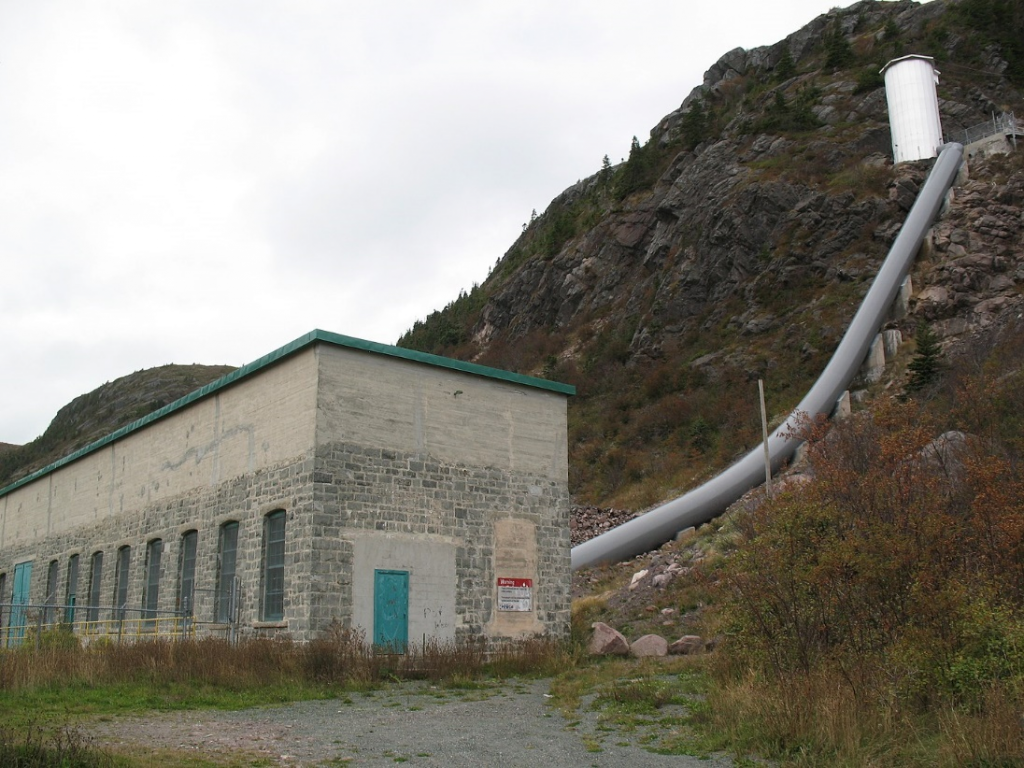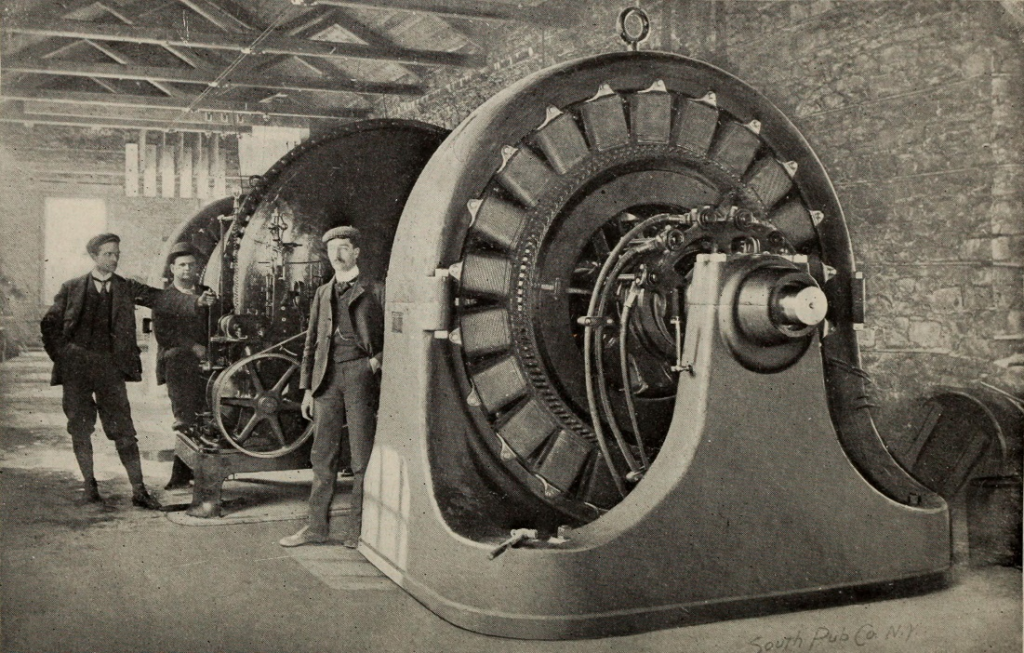
Site Location: Lat.: 47° – 27’ – 55” N.; Long.: 52° – 42’ – 45” W. (GPS: 47.465275, -52.712439). The road to the power station is not publicly accessible, so these directions are to a view of it from Petty Harbour. Eastbound on the Trans-Canada Highway 1, take Pitts Memorial Drive/NL-2 E at Exit 41A toward St. John’s Downtown/Mount Pearl. After 5.9 km, take the NL-3 exit (south) toward Commonwealth Avenue/St. John’s (Goulds). Proceed 0.35 km and turn right onto Robert E Howlett Memorial Drive/ NL-3 S (signs for Goulds/Witless Bay). After 4.2 km, turn left onto Doyles Road, and, after 1.8 km turn left (north) onto Main Road/NL-10. After 0.1 km, turn right (east) onto Petty Harbour Road/NL 11 and proceed 5.5 km to Petty Harbour. The power station is on the left (west).
Plaque Location: The plaque is believed to be located at the power station.
Description: The Petty Harbour Hydro-electric Generating Station began operation in 1900 to supply power for the new street car system in St. John’s. It was constructed by the St. John’s Street Railway Company, established by Robert G. Reid, at a cost of $191,000. The company was renamed the St. John’s Light and Power Company in 1920: it was also providing electricity for the city’s street lights, businesses and residences. St. John’s power supply was cut off for five days in 1921, when an avalanche destroyed part of the wooden penstock that carried water from the dam to the generating station. In 1924, it was taken over by the Royal Securites Corporation of Montreal. It is now owned by Newfoundland Power Company Ltd.


Historic Significance: The development of the Petty Harbour Power Station was actually part of a much larger contract between the Government of Newfoundland and the Reid Newfoundland Company for the construction of the trans-Newfoundland Railway that included a street railway system for St. John’s. At that time, power stations were built to satisfy industrial energy and domestic lighting needs, so the construction to power a system of street cars was unique. During World War 2, the public and visiting sailors travelled by streetcar, as only taxi drivers and the wealthy owned automobiles.
The Petty Harbour power station is one of the oldest in Canada and it is one of the few that went in service at the beginning of the 20th century and are still in operation today.
Plaque Wording: National Civil Engineering Historic Site. CSCE. THE PETTY HARBOUR HYDRO-ELECTRIC POWER PLANT. A tribute to the civil engineers and all who helped design, build and maintain the first hydro-electric power station in Newfoundland. This plant, which opened in 1900, is one of the very few stations built at that time which is still in operation. Original owner: Reid Newfoundland Company. Current owner: Newfoundland Power Company Limited. Engineer: William Mackay. Canadian Society for Civil Engineering. 2009.
SCGC. Site Historique National de Génie Civil. LA CENTRALE HYDROÉLECTRIQUE DE PETTY HARBOUR. En hommage aux ingénieurs civils et à toutes les personnes qui ont contribué à la conception, à la construction et à l’entretien de cet ouvrage, qui fut la première central hydroélectrique de Terreneuve. Inaugurée en 1900, cette centrale est l’une des rares usines construites à cette époque qui soit encore en function de nos jours. Premier propriétaire: Reid Newfoundland Company. Propriétaire actuel: Newfoundland Power Company Limited. Ingénieur: William Mackay. Société canadienne de génie civil. 2009.
Plaque Unveiling Ceremony: The plaque was unveiled on May 29, 2009 at Petty Harbour by CSCE President Guy Gosselin and Earl Ludlow of Newfoundland Power, and formally presented by Gordon Jin, Chair of the CSCE Newfoundland and Labrador section. Alistair Mackenzie of the CSCE National History Committee was Master of Ceremonies and Reg Wallace, Chair of the CSCE National History Committee briefly described the historic site commemoration program. Jennifer Williams of Newfoundland Power described the historic attributes of the power plant.
Links to Online Documentation:
Canada’s Historic Places, “Petty Harbour Hydro-Electric Generating Station”.